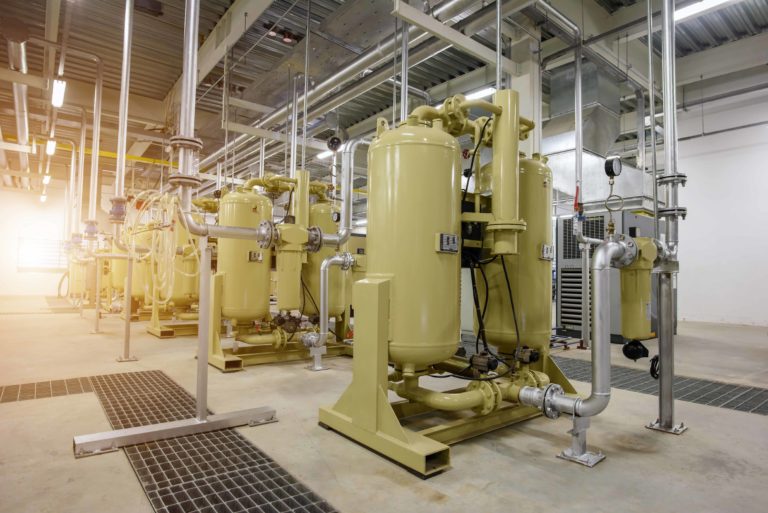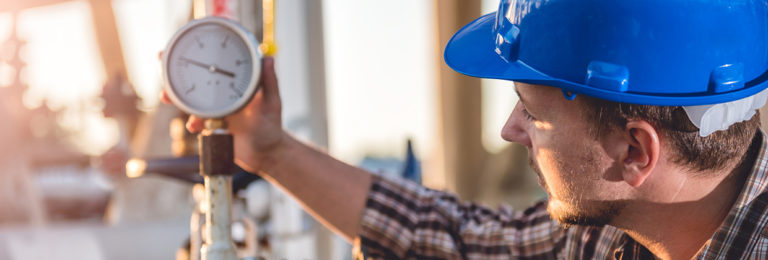To make this measure more effective and tailored to the specific context of your company, we recommend that you first perform an overall analysis of your energy situation.
Compressed air: an energy carrier that needs optimising in numerous sectors
Compressed air is an energy carrier that is frequently used in many sectors, particularly in the use of production machinery and specific pneumatic tools. Despite its abundant use, it is a complex medium to control, resulting in high operating costs. In an unmonitored installation, as much as 90% of the losses in heat generation and distribution can be linked to leaks. Compressed air costs can be contained by regularly analysing energy requirements and through technological monitoring. This applies to all new compressed air system.
Defining the requirements for the installation of a new compressed air system
Analysis of the current situation
- Determine the parameters of the existing installation, e.g. age, general condition, pressure level, minimum and maximum flow rate, energy consumption and associated costs, etc.
Analysis of compressed air requirements
- Given the considerable cost of using compressed air, it is recommended that, before any modifications are made, to determine whether compressed air is indeed the most suitable method for carrying out this task.
- Identification of the main characteristics of the compressed air consumption requirement, e.g. pressure level, flow rate, humidity, etc.
- Reduce network pressure as far as possible, according to the compressed air requirements (temporary reduction possible depending on requirements)
- Identification and elimination of potential leaks in the existing system. This will allow a more accurate estimate of compressed air requirements and avoid over-sizing the new installation.
- Is it necessary to replace the installation, or is it perhaps sufficient to optimise the installation?
Taking your compressed air system installation project one step further
- The main tasks of a consulting engineering office (specialised in technical engineering) in the context of the creation of a new compressed air system are as follows:
- identification of requirements based on the current situation
- identification of potential end users for the wasted heat, e.g. pre-heating of domestic hot water or space heating
Identify the appropriate compressed air installation to suit the particular purpose.
- Definition of the solution adapted to the needs and the specific application
- Based on the needs analysis, define the solution in collaboration with a supplier or a consulting engineering office (specialised technical consultant).
- In addition to the primary requirement, consider heat recovery, the installation of measuring points to monitor the installation and the compatibility of the existing network with the new compressor
- Evaluate other measures to improve system efficiency:
- Automatic shutdown of the compressed air network outside operating hours
- Installation of pressure-reducing valves upstream of consumers with low pressure requirements
- Disconnection of consumers using magnetic valves
- Renewing the system is an ideal opportunity to check whether it is possible to utilise the waste heat. The recovered heat could, for instance, be used to heat domestic hot water or rooms.
- etc.
- Verification of operating permits for the project
Where existing installations are to be adapted, and especially when setting up new installations, check the nomenclature of classified establishments.
- Drawing up specifications and requesting tenders
Subsidy application
Government subsidies
Please note: any application for government or non-government subsidies must comply with the “incentive effect”, subject to compliance with the subsidy conditions.
In order to respect the “incentive effect”, no binding commitment (signing a quotation; paying a deposit) may be made BEFORE having received the agreement in principle from the government or the electricity and natural gas supplier following an application for subsidy.
- Temporary environmental impact aid scheme
The extended aid scheme “SME Packages Sustainability” provides more incentives for companies to invest in measures that significantly improve their environmental impact. Photovoltaic installations are subsidised at 70% for small businesses, 60% for medium-sized businesses and 50% for large businesses on projects costing more than €7,500, with a maximum amount of €100,000.- Verification of company eligibility and costs: Ministry of the Economy (Department for Support to SMEs).
- Application deadline: 30 June 2025
- For further information:
- “Fit 4 Sustainability” programme:
- The Fit 4 Sustainability programme co-finances an environmental audit + action plan on one or more of the topics selected by the company (energy, greenhouse gases, waste, water, etc.).
- Subsidies of up to 50%, 60% and 70% of the fees for carrying out an environmental study (energy audit and/or carbon assessment) + detailed, costed action plan to reduce consumption/GHGs (medium- and long-term investment, ROI, etc.) – open to SMEs and large companies (except those required to carry out a statutory audit).
- For questions : Luxinnovation
- SME Packages – Sustainability
- Financial Aid for small and medium-sized enterprises covering up to 70% of eligible costs for the implementation of a project aimed at reducing the environmental impact. The eligible project budget must be in a range from 3.000 € to 25.000 € excl. VAT.
- For more information:
- Chambre des Métiers for craft companies
- Chambre of Commerce for businesses in the non-craft sectors
- Environmental protection scheme – Investment aid for the protection of the environment
- Verification of company eligibility and costs: Directorate General – Industry, New Technologies and Research
- Support in drawing up the aid application file prior to submission to the Ministry of the Economy
- For any questions: Luxinnovation
- More information and guidance for businesses on environmental investment is available in the Simplified guide for businesses
- SME scheme – Subsidy for consultancy services
- Subsidy for small or medium-sized enterprises, up to 50% of the fees of external consultants for consultancy services
- Verification of project eligibility and body granting subsidy: Ministry of the Economy (Department for Support to SMEs)
- o For more information:
- House of Entrepreneurship by the Chambre de Commerce
- Chambre des Métiers
N.B. Government subsidies cannot be combined for the same project.
Applying for subsidies from electricity and natural gas suppliers
As of 2015, natural gas and electricity suppliers have been required to make energy savings for consumers as part of the obligation mechanism. Since then, energy suppliers have been offering support and advice services as well as subsidy programmes for consumers to implement energy efficiency measures.
The following suppliers offer this service to businesses:
- Enoprimes Enovos + SUDenergie
- SUDenergie
- Sudstroum
Once the compressed air system has been installed
- Schedule maintenance and periodic inspection of the system
- Regularly check the compressed air system for leaks (e.g. every two years and whenever changes are made to the compressed air system).
Implementation aid
- ITM SST 1305.1 Appareils sous pression fixes contenant de l’air comprimé ou des gaz liquéfiés, comprimés ou dissous. Avec marquage « CE » (ITM SST 1305.1 Stationary pressure vessels containing compressed air or liquefied, compressed or dissolved gases. With CE marking)
- Loi modifiée du 15 décembre 2017 relative à un régime d’aides à la protection de l’environnement (Amended Law of 15 December 2017 on an environmental protection subsidy scheme)

